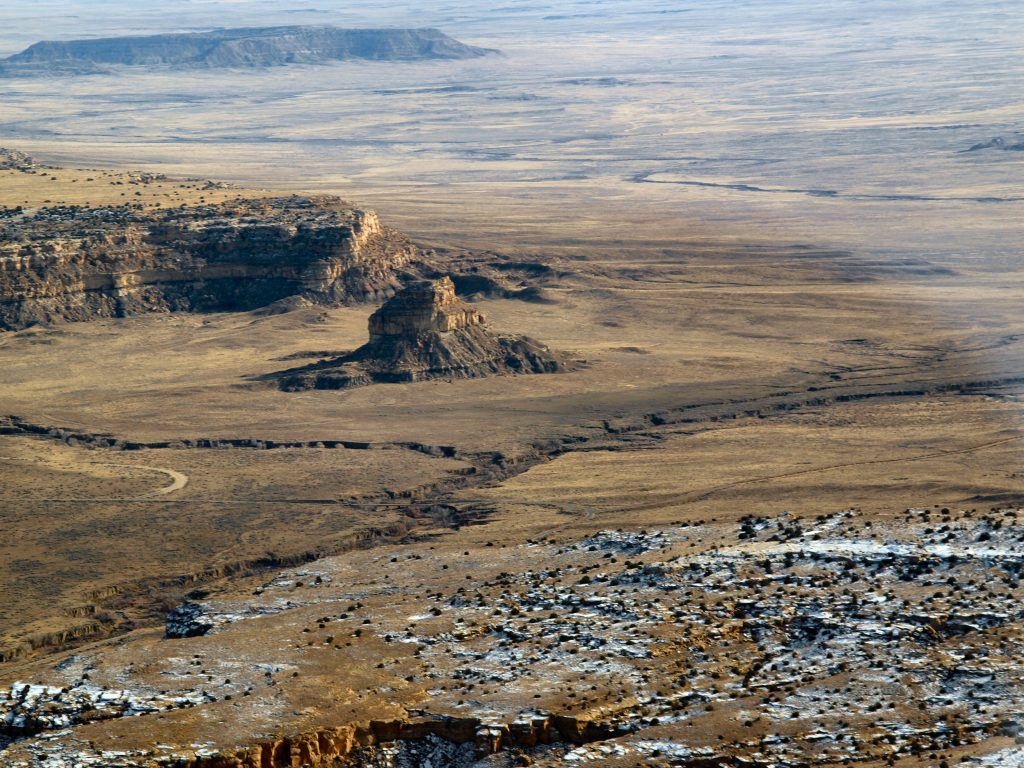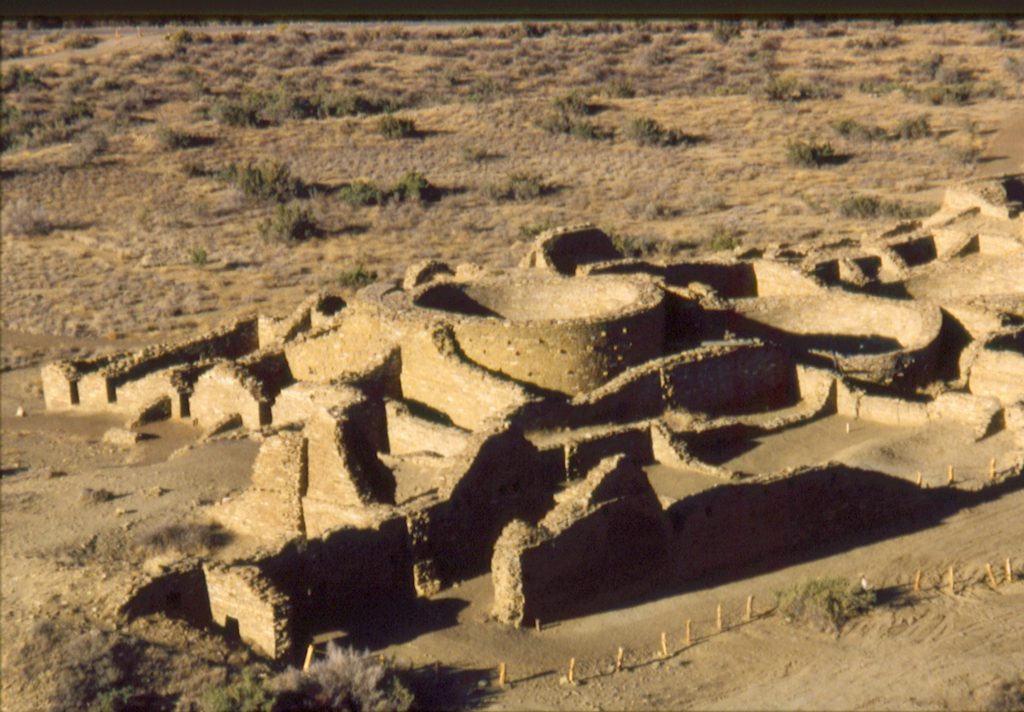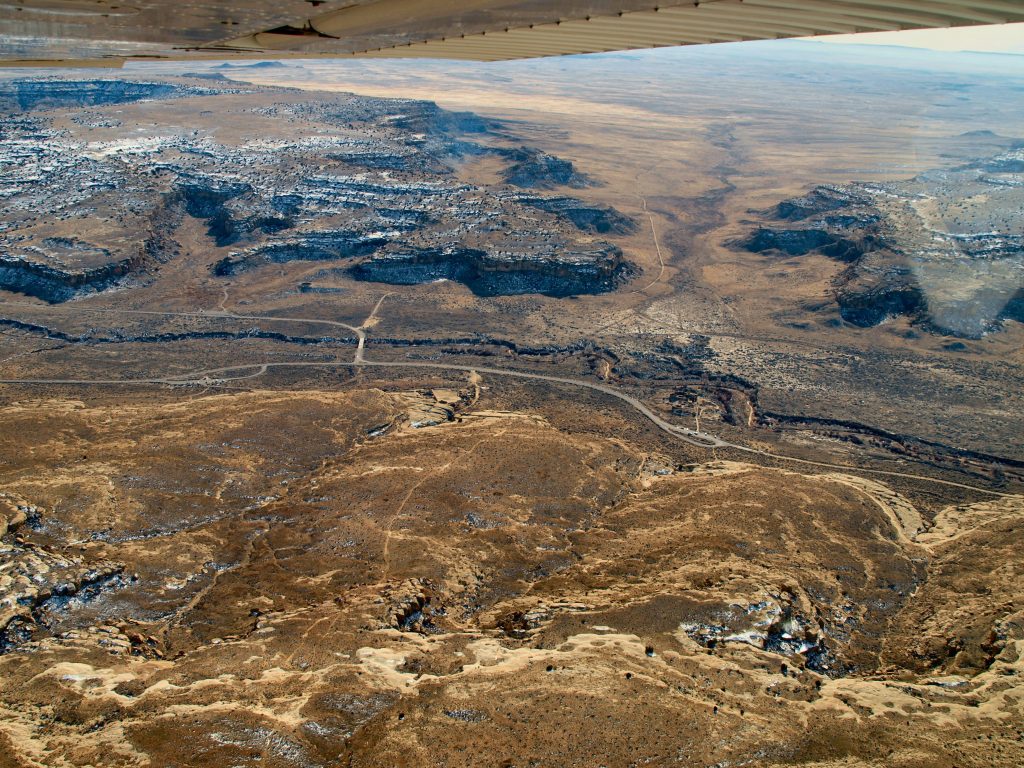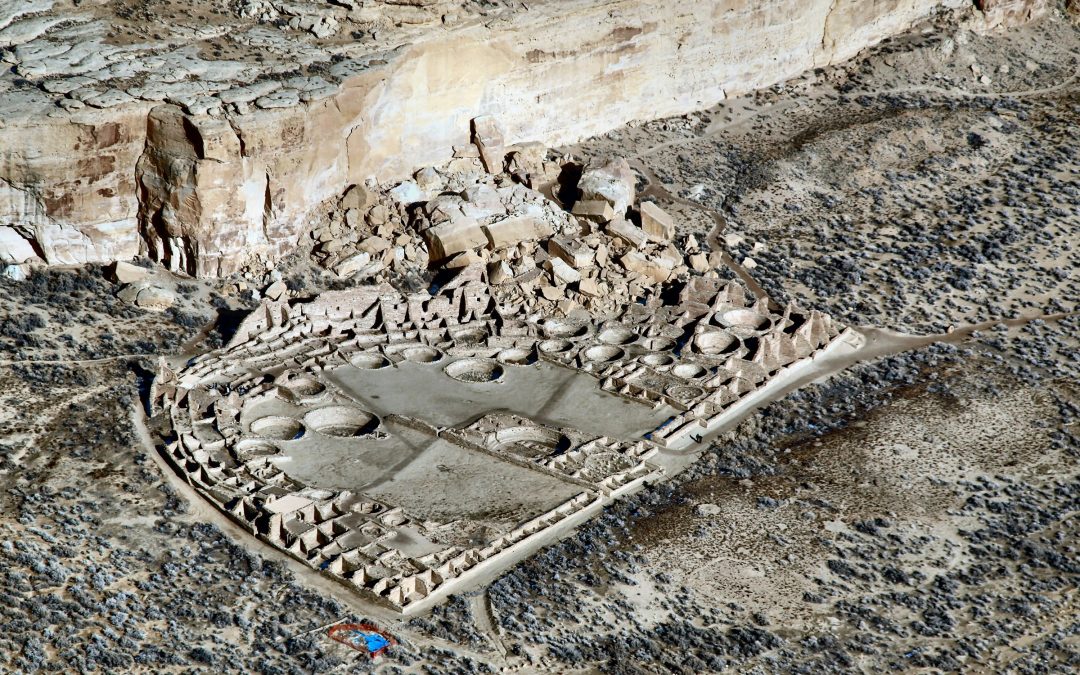Photograph of Pueblo Bonito, Chaco Canyon, courtesy of Robert Adams.
Archaeology and Place
Archaeologists have been paying attention to place for many years. As they have studied vernacular architecture, among other important markers of the past, they have recognized the importance and meaning given to specific places by peoples around the world. Chaco Canyon in northwestern New Mexico has been one such place for hundreds of years.
On Wednesday, June 30, 2021, archaeologists Catherine Cameron and Stephen Lekson (both professors at the University of Colorado, Boulder) will present “Chaco: Crafted Space, Remembered Place” as part of SAR’s Senses of Place Summer Series.
“Thirty to forty years ago,” says Cathy, “people were mostly interested in the effect of climate on human activities. And now they’re realizing that these other ideological aspects of culture are much more important, and so place becomes important. This is what we want to develop in the panel: How did Chaco become one of these important places? How did it grow and develop? Why didn’t it just disappear? I think this is all tangled up with history, memory, connections. For example, the ancient Chacoan roads are memory pieces. That’s on-the-ground memory.”

Photograph of Chaco Canyon courtesy of Robert Adams.
A road is a memory, and memory is a road in our minds that takes us from the present back into the past: “Memory is something that is connected materially, and that’s where archaeologists get interested. Of course, memory’s in our heads, but it’s connected to all sorts of things. You have objects that are passed from generation to generation to generation, and that opens up all sorts of ideas in our mind of places and events. And then you have places that you visit. That’s what pilgrims do—they go to places that are meaningful so that they can remember events from the past.”
“Not all memories are positive,” adds Steve. “Pueblo people and Navajo people have a lot of memories of Chaco that are fairly negative. And it’s brought out as an example of how not to do business. That’s interesting to explore, too. As part of their heritage, it’s a sacred place, and that doesn’t necessarily mean that it’s a positive memory, but it’s a strong memory.”
Photograph of Chetro Ketl, Chaco Canyon, courtesy of Stephen Lekson.

Architecture anchors Chaco at the center of a universe of relationship and meaning, and archaeologists use the architectural medium to tell us part of the history of this ancient place: “Chaco is a national monument, a world heritage site, because of its architecture, and the great houses tell a story about changing cosmologies. An interesting, maybe a fundamental, part of the history actually plays out in the architecture.”
The Cordell Lecture
In addition to contributing to our summer series, this event serves as SAR’s annual Cordell Lecture. Linda Cordell (1943–2013) was an archaeologist of the Southwest, an SAR resident and senior scholar, and an SAR supporter. She won the A. V. Kidder Award for Eminence in the Field of American Archaeology in 2001.
“She certainly influenced my thinking,” says Cathy, “and she was an incredible mentor to young women. She encouraged them to develop their ideas, she pushed them to publish. She was an amazing woman and very, very influential in Southwestern archaeology and especially among young, upcoming archaeologists. She was always pushing people to think beyond our current mental box—that was a great contribution.
Photograph of Chaco Canyon courtesy of Robert Adams.

Steve describes how he and Linda argued in productive ways: “She and I interpreted things fairly differently, like Chaco, and it was great to have a sparring partner of her caliber to sharpen my thinking. I don’t think I ever persuaded her, but it was certainly good for me. Hopefully, it was amusing for her. In terms of the migration from the Four Corners to the Rio Grande, she was on top of that early. There’s been a big difference of opinion about whether people from the Four Corners moved to the Rio Grande or whether the Rio Grande population grew by itself. This whole area to the north just emptied out. Where did they go? Well, you have to assume that some of them came down here. Linda was already on top of that. She was leading archaeology in the Southwest to an understanding that population movement is historical.”
For more on Chaco and place, join Cathy and Steve, along with Ruth Van Dyke (Binghamton University) and Phillip Tuwaletstiwa (Hopi Tribe), on June 30 at 2:00 p.m. Later the same afternoon, at 4:00 p.m., SAR members can join Cathy, Steve, and Ruth for further conversation about Chaco and place.
